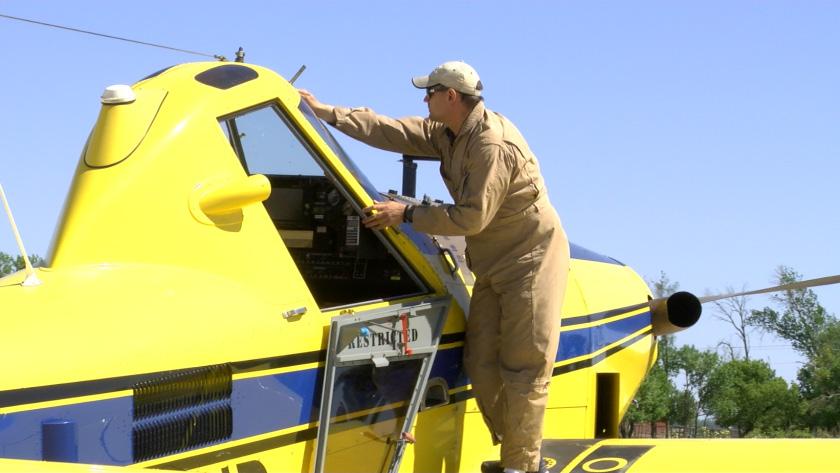
1 minute read
Like planting, aerial spraying has been thrown off schedule
By Jeff Beach, Agweek
Rain, wind, changing regulations and the lure of high commodity prices all have an effect on aerial applicators during the 2022 growing season. Jeff Beach, Agweek there’s no dicamba spraying after June 30.
Advertisement
“It’s going to be difficult to get that dicamba put on,” Thisius said, noting that 20 miles to the south, farmers in Iowa have until June 20 to use dicamba.
New regulations also mean chlorpyrifos is no longer available.
Gary Jerger is just north of I-94 near Moorhead, Minnesota. He said farmers there are sitting pretty well but you don’t have to go far to the southeast to find farmers more heavily impacted by wet fields and a couple rounds of severe storms in May.
Even so, “I’m at least a month behind,” said Jerger, who runs Ag Spray, Inc. and is in his 48th year as an aerial applicator.
Across the Red River in North Dakota, Hovdenes has been busier, putting out some cover crop to protect sugarbeets from the wind and some preemergence herbicides.
Randy Melvin, near Buffalo, North Dakota, has used Right Way Ag this spring to apply fertilizer and herbicide to some rye that he grows for his own cover crop seed.
“There was no way we were getting a ground rig in that ground,” Melvin said as he was planting navy beans on Tuesday, June 7.
Progress is very scattered in North Dakota.
“We have wheat that went in fairly early and we have wheat that just went in the ground two days ago,” Hovdenes said Monday, June 6. “So a lot of the applications are going to be spread out, mismatched this year. It won’t be all at once like it has been in the past.”
He said farmers are pretty determined to get a crop in where that’s possible to take advantage of high commodity prices. But he expects some prevented planting acres that may still need weed control.
“I would rather spray fungicide on a customer’s growing crop that they’re going to make revenue off of than go out and keep weeds out of a prevented plant field,” Hovdenes said.
Thisius said some farmers who may be on the fence about whether or not to use a fungicide on corn are pulling the trigger this year to make sure they maximize yields to take advantage of the high prices.
But like fertilizer, chemical herbicides and pesticides have shot up in price.
Hovdenes said prices for some products have more than doubled and others can’t be found because of supply chain issues.
“Some guys are changing some of their agronomic practices because of the pricing,” Hovdenes said. Reprinted with permission from Agweek.










